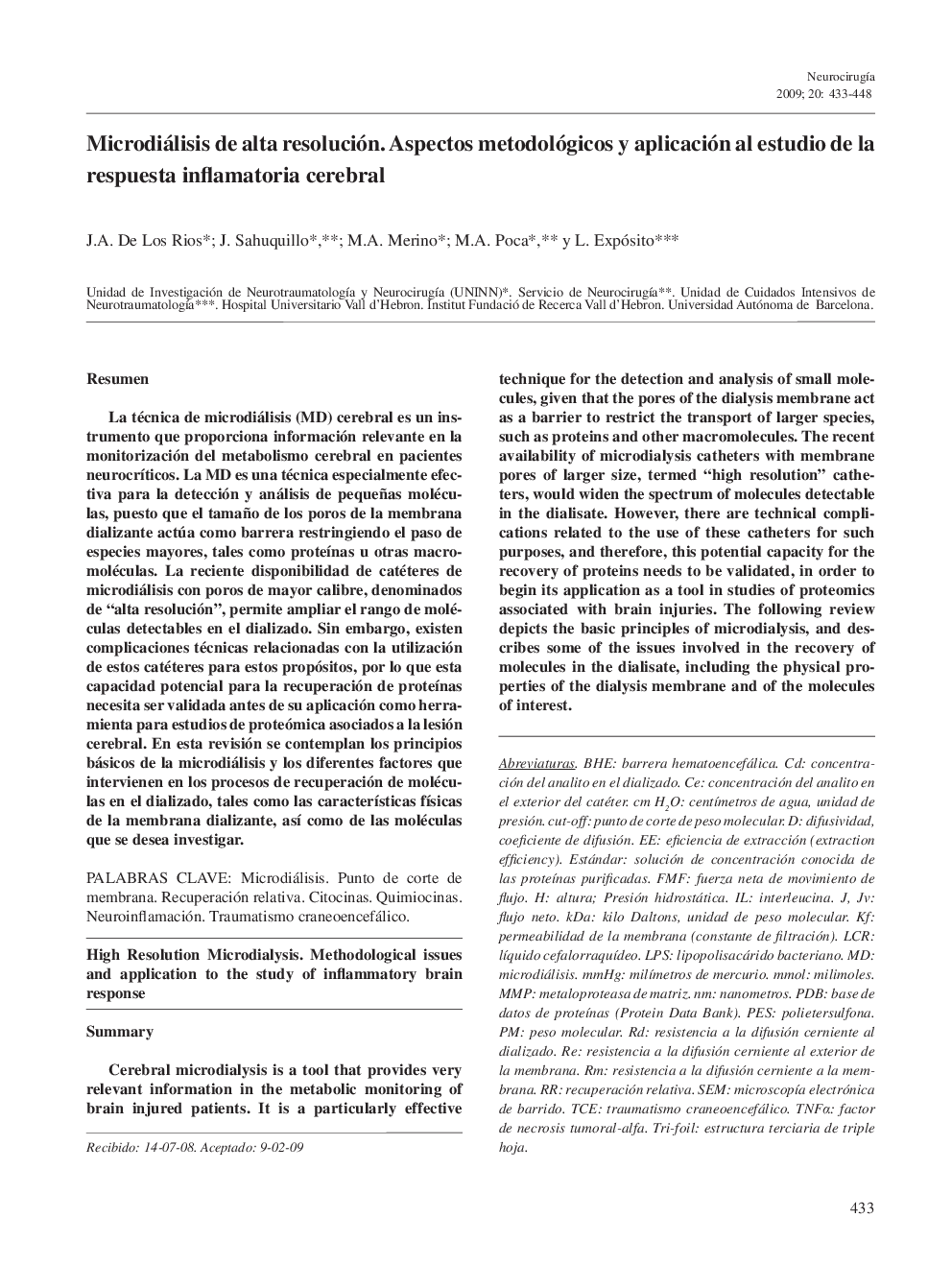| Article ID | Journal | Published Year | Pages | File Type |
|---|---|---|---|---|
| 3071507 | Neurocirugía | 2009 | 15 Pages |
Abstract
Cerebral microdialysis is a tool that provides very relevant information in the metabolic monitoring of brain injured patients. It is a particularly effective technique for the detection and analysis of small molecules, given that the pores of the dialysis membrane act as a barrier to restrict the transport of larger species, such as proteins and other macromolecules. The recent availability of microdialysis catheters with membrane pores of larger size, termed “high resolution” catheters, would widen the spectrum of molecules detectable in the dialisate. However, there are technical complications related to the use of these catheters for such purposes, and therefore, this potential capacity for the recovery of proteins needs to be validated, in order to begin its application as a tool in studies of proteomics associated with brain injuries. The following review depicts the basic principles of microdialysis, and describes some of the issues involved in the recovery of molecules in the dialisate, including the physical properties of the dialysis membrane and of the molecules of interest.
Keywords
Related Topics
Life Sciences
Neuroscience
Neurology
Authors
J.A. De Los Rios, J. Sahuquillo, M.A. Merino, M.A. Poca, L. Expósito,
